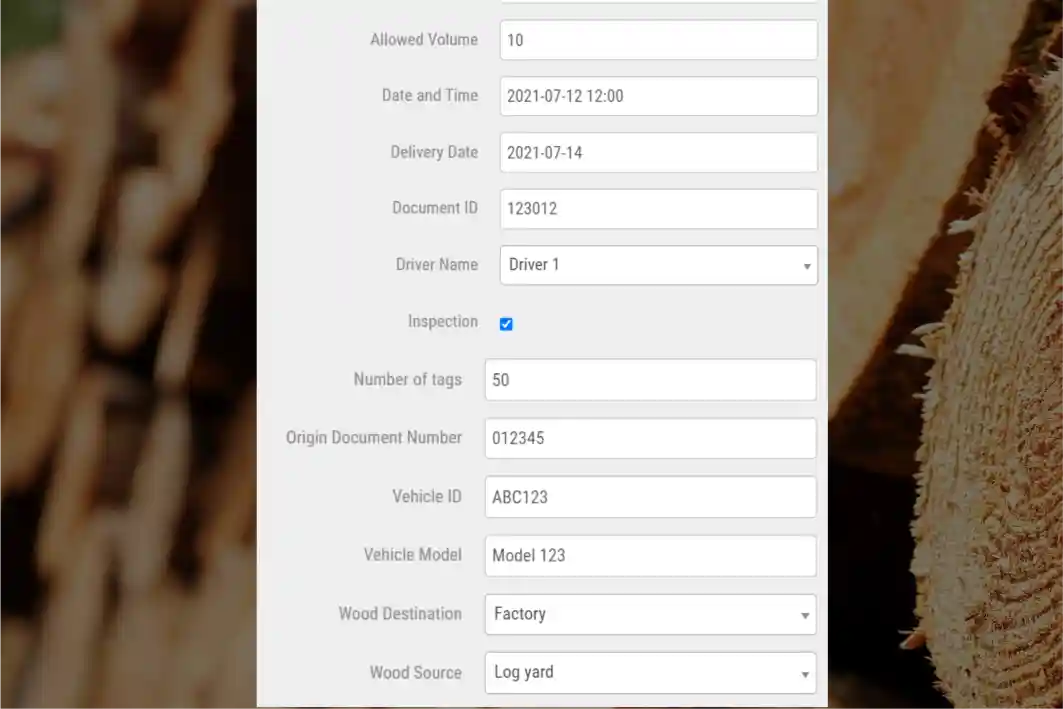When creating a solution to meet the needs of the forest sector supply chain, we think about accurate data and information that fits into different contexts in industrial processes, from the field to the factory.
We know that there are particularities in each of the industries – pulp and paper, sawmills, fuelwood consumers, among others – and, therefore, our team has developed a completely customizable functionality that we will explain step-by-step here: we are happy to introduce Timbeter’s Custom Fields.
Timbeter consists of two parts: a mobile application to perform and process measurements of logs and a cloud-based Storage Module, where all measurements are synchronized, it is possible to prepare reports, organize inventories and customize information. Timbeter’s Custom Fields is an on-demand functionality and information is created from the Storage Module. By synchronizing the account’s devices, this personalized information becomes available in the mobile application as well.
The main goal of Timbeter’s Custom Fields is to allow companies to include unique information regarding their processes, increasing organization and efficiency in different steps of the production chain, in addition to integrating this data to existing processes at different stages, from measuring diameters and volumes, all data inherent to transportation and logistics and internal information.
To start integrating customizable data into the solution, the Timbeter account administrator will go to the Web Storage Module and, by clicking on the gear icon in the upper right corner, they will find the Custom Fields.
The next step is to add new data to be integrated into Timbeter’s Storage Module and mobile application. By clicking on the “plus” symbol, the user will be able to choose a name, an integrated key, the source key and data type for the information, as well as tagging if this information is searchable or needs to be typed into the application during the measurement.
For a better understanding of how to fill the data:
Name – is the title of the field, this is the information that will be shown in the mobile app and Storage Module. It can also be used for documentation purposes.
Key – should only contain lowercase letters, underscores and numbers. This specific data is a tag of the meaning of the field. For example: if a user wants to add the name of the truck driver to Timbeter’s measurement, the “Name” can be “Truck Driver” and the Key can be “driver”.
Source Key – it’s where the information comes from. In this specific case, all data comes from Timbeter’s measurement
Data type – it’s the kind of data that should be added by the user. Data types are:
- Boolean: allows yes or no marking
- String: allows letters, numbers and symbols
- Integer: allows integer numbers
- Date: allows adding a specific date
- Decimal: allows adding decimal numbers
- Datetime: allows adding a specific date and time
As an example, an user added a Delivery Date that should be filled in the measurement with Timbeter. They added the Name of the custom field, the information key, the source key from the measurement and the data type as “date”, since it allows the user to search for a specific date.
Another example shows the use of a “string” type of field, where users can add names, addresses and other information, according to the custom field name. For a logistics company, it is important to add the driver’s name into the measurement. With Timbeter’s Custom Fields, the information for “Driver Name” was added to the Name field, key and data type.
In the same example, supposing that the company has designed drivers, it is also possible to set “Field Values”, as “Driver #1”, “Driver #2”, etc. When making the measurement with Timbeter’s mobile app, these values will be already available, without any need to type full names or full addresses.
Another type of Custom Field is useful for information comparison, for example, with law enforcement agencies or road control. By setting up the “Allowed Volume” with the data type “integer”, the measurer will instantly understand if the volume measured with Timbeter overpasses the volume allowed by the company or road administration, avoiding overloaded trucks, fines and accidents.
After synchronizing the information with internet connection, all the custom field data will also be available in the fillable fields that are usually set with Timbeter, such as the reference size, log length and tree species.
Having all data gathered in the same part of the measurement with Timbeter also speeds up the processes, as users don’t need to go back and forth to fill out information.
After the measurement is synchronized with the Storage Module, the custom fields are also available with the filled data, allowing account administrators to check for discrepancies, have a better understanding of the supply chain and enabling accurate and personalized reports, as well as integrating data via API to transfer information to internal databases.
Timbeter’s Custom Fields also eliminate the old “pen and paper” processes, which are time consuming and can be easily misfilled or lost. All the data is gathered in the cloud and it’s easily checkable and shareable with the rest of the team.
